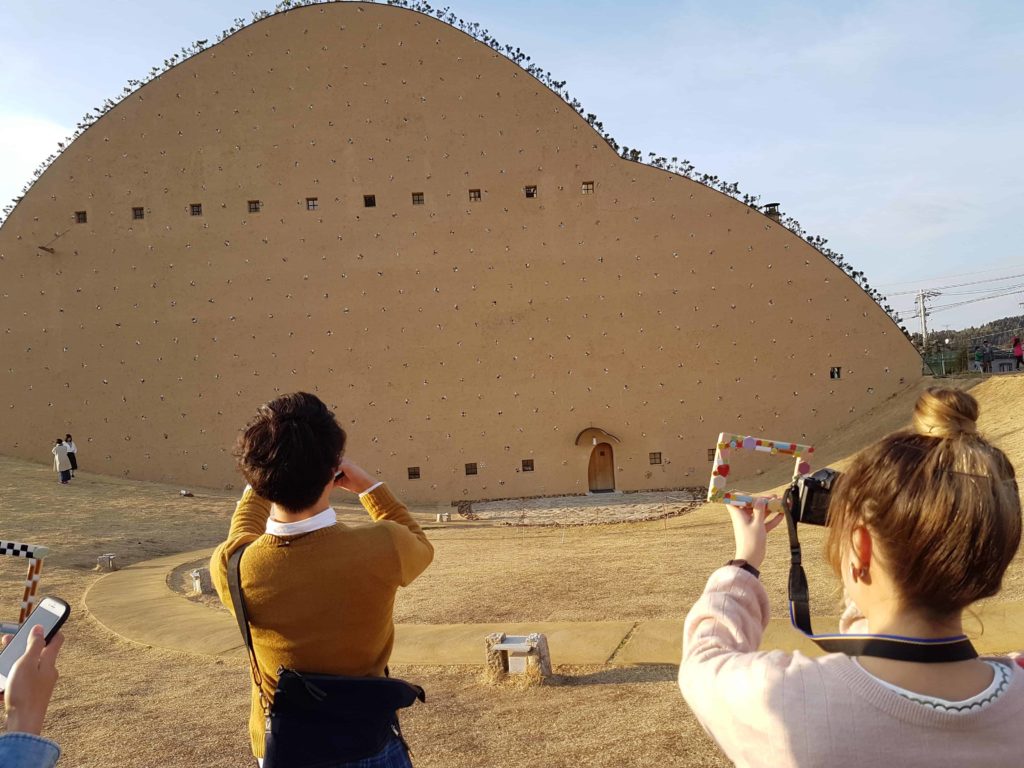
The Mosaic Tile Museum in Tajimi is a wondrous building. A journey upwards to the light weaves around the history of tile ceramics in the everyday life of Japan. The Tajimi style involves tiny tiles, making a kind of complex pixelation that gives ordinary forms like public bathtubs a stylish look.
I spoke with the curator Nadoka Murayama who helped develop the museum to its inception a year ago. When I asked her what had surprised her during this time, she said: “I didn’t expect the public would want to touch everything so much.”
Indeed, the ground floor is a hive of activity, with special kits for visitors which enables them to make a mosaic on a picture frame. When we exited the building, walking up the gentle hill the flanks the museum, I saw why this was such a popular pursuit. Dozens of visitors were taking images of this photogenic museum (modelled on the original clay mountain of the area) through their handmade picture frames.
That’s interesting. To an extent, it performs the function of a selfie in presenting a personal perspective on a public scene. But instead of the phone holder, what “frames” the scene is their own handiwork.
Are we seeing the evolution of a new kind of “selfie”, with Japanese characteristics? Would we call it the “craftie” in honour of the universal Australian diminutive?We try to be open-minded about the impact of Instagram on what we are producing. On the one hand, it’s a monumental distraction, frittering away time in a stream of images. But the “craftie” shows how it can also be a platform for something a little more productive.

